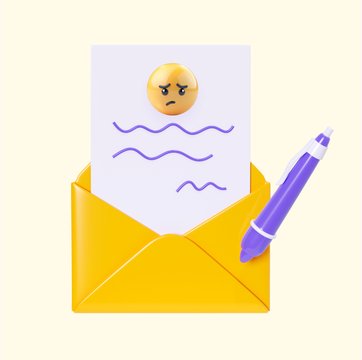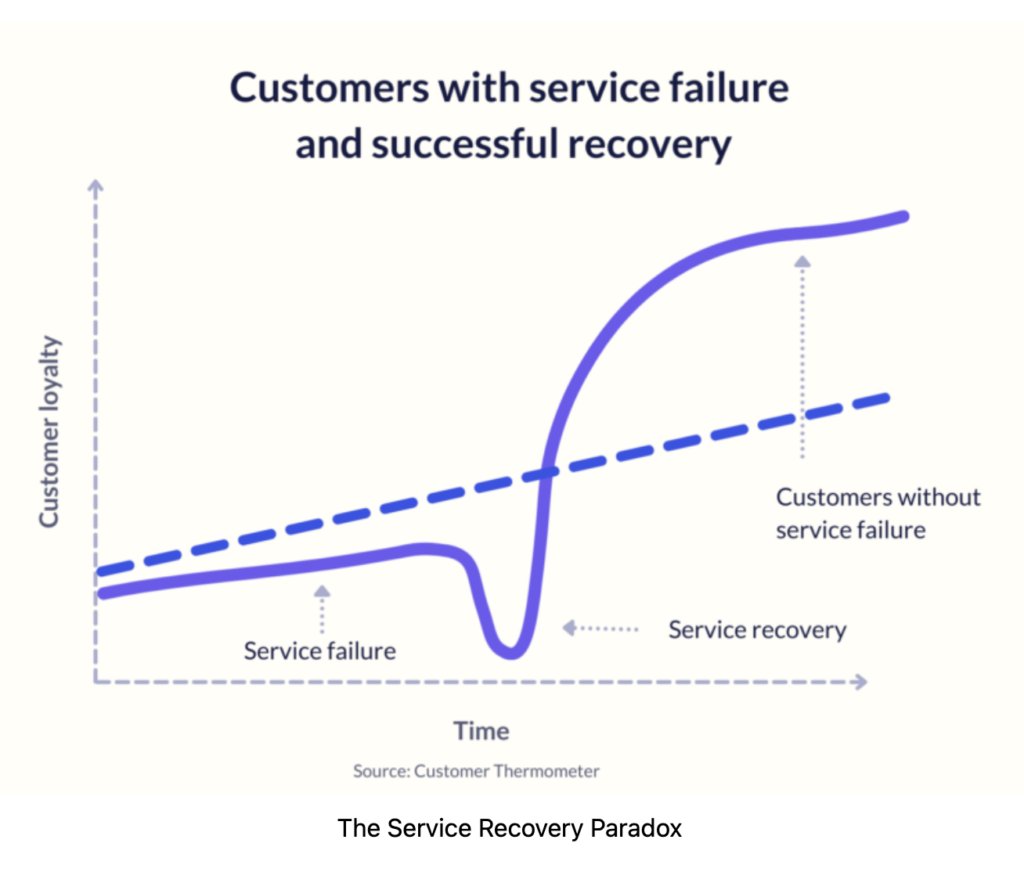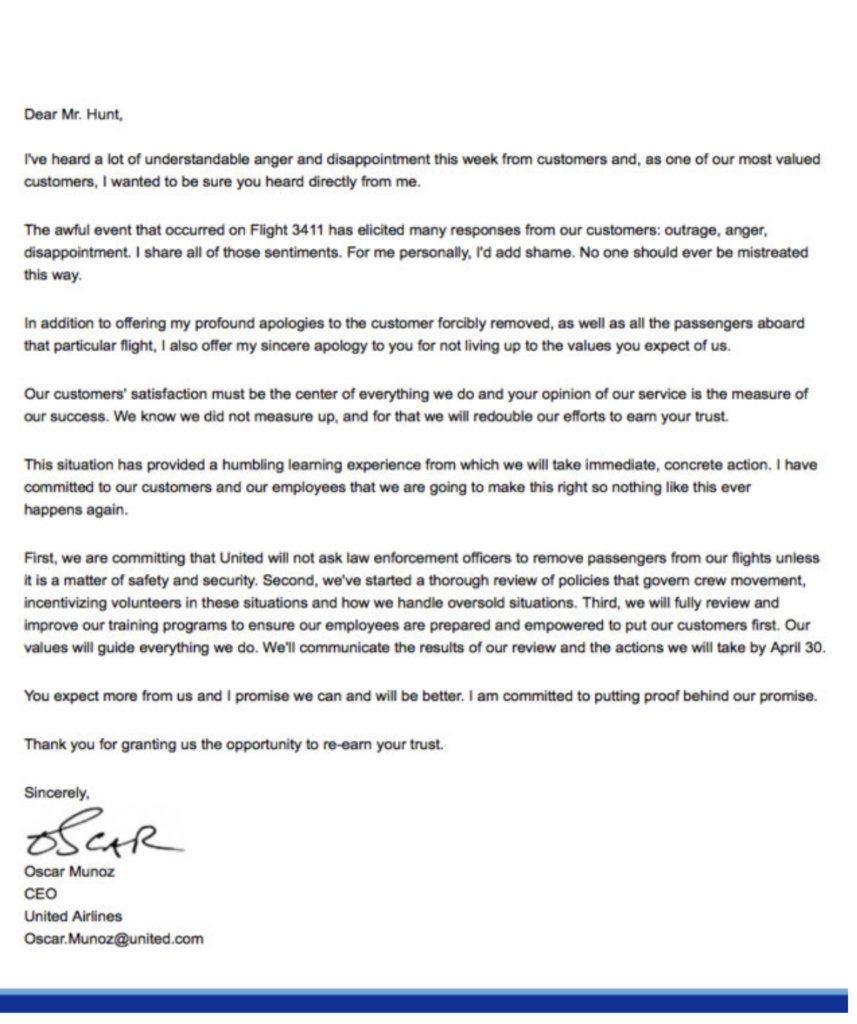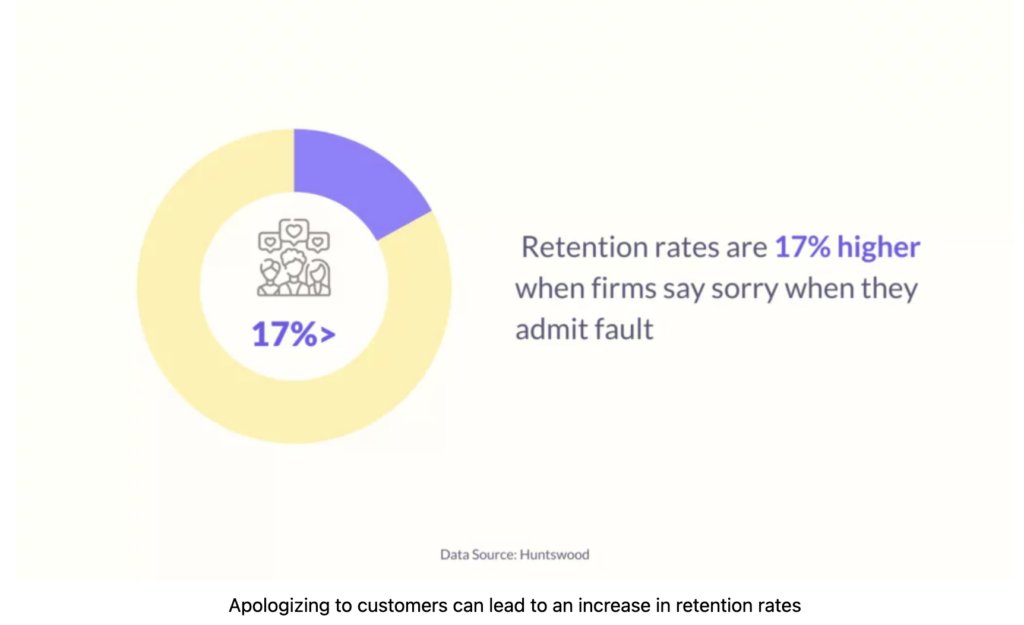How to Write Effective Apology Emails to Customers + 14 Templates

Table of contents
Let’s say you head customer support at an online clothing store. A customer emails you about a defective product they have received. What do you do?
Studies show 72% of customers switch brands after just one negative experience.
So, what if you could craft a sincere apology email where you take ownership of the issue at hand and offer a solution? This is something that could turn the frustrated customer’s experience around. It could change their mind to give your business another chance.
Yes, a single email can do that. But writing apology emails in customer service can get tricky because unlike in face-to-face interactions, you can’t communicate non-verbal cues. So, while what you write matters, how you write is equally important.
We decided to break down the entire approach of writing such emails and offer some actionable tips and templates that can help.
Table of Contents
- Why Is Apologizing To Your Customers Important?
- How To Write Effective Apology Emails To Your Customers – 5 Best Practices
- 14 Effective Templates of Apology Emails
- 1. Negative product or service experience
- 2. Billing error
- 3. Late product or service delivery
- 4. Troubleshooting and clarifying a problem
- 5. Late email responses or replies
- 6. Interruptions for scheduled maintenance
- 7. Mass apology email
- 8. Apology for incorrect information/miscommunication
- 9. Apology for technical glitches
- 10. Apology for unavailable product/service
- 11. Apology for damaged or defective product
- 12. Apology for account security breach
- 13. Apology for cancellation of appointment
- 14. Poor Customer Service Experience
- Apology Emails in Customer Service Can Help Win Back Customers
- Frequently Asked Questions (FAQs)
Why Is Apologizing To Your Customers Important?
Let’s face it – mistakes happen. Even the best brands slip up, and that’s normal. But, what’s important is that you own up to the mistake and do your best to fix it. Instead of playing the blame game, you’d want your frontline support staff to take accountability with angry customers when an experience turns south.
Here’s why this matters:
- Helps with customer retention: Keeping customers happy is less expensive than finding new ones. Ignoring mistakes can damage your relationships with your customers. If you do not address issues, your customers are likely to churn. Also, acquiring new customers is 6-7 times more expensive than retaining older ones.
- Builds trust: Owning up to mistakes shows you care about your customers. When a business acknowledges its errors and apologizes sincerely, it demonstrates transparency and honesty. This builds trust with customers. It shows them that you value their satisfaction and are committed to rectifying the situation.
- Improves loyalty: Handling a complaint effectively can transform an unsatisfied customer into a loyal advocate. By going above and beyond to resolve the issue, businesses can turn a sour experience into something memorable for the customer. In fact, there’s a school of thought that thinks service failures can be seen as opportunities to improve customer loyalty.

- Avoids bad publicity: Negative experiences that customers have with your business can spread quickly on social media and other third-party online platforms. Ignoring customer complaints can escalate the issue and damage a company’s reputation. And so addressing complaints promptly helps mitigate negative publicity and keep your brand image intact.
How To Write Effective Apology Emails To Your Customers – 5 Best Practices
We’ve already touched upon the fact that conveying an apology via email can be tricky. But your support team needs to perfect this skill because email is one of the most preferred customer support channels.
So, how do you craft excellent apology emails? What are some of the best practices you need to keep in mind? Let’s take a look!
1. Empathy is key
What’s worse than not saying sorry is saying it for the sake of it. A shallow ‘the inconvenience is regretted’ will do more harm than good, as customers can see through it. It’s most likely to show that your brand doesn’t genuinely care about its customers.
So, the first step is always figuring out WHY the customer is frustrated or WHY the customer’s experience went south.
The reason could be a technical issue, service downtime, product malfunction, long wait times, and or poor packaging. Whatever it is, let the customer know that you understand their pain and that you’re with them.
In other words, show that you empathize with what the customer is going through. And, how do you do this? Place yourself in the customer’s shoes and imagine what it would feel like. The customer would have had certain expectations, and it’s only natural to feel frustrated when they aren’t being met.
Some phrases you can use to translate that empathy in an apology email:
“I can see how important this is in your everyday routine…”
“I can totally understand how frustrating this has been…”
“I can understand why you’re feeling this way…”
The moment you show empathy, it makes the customer feel better. Why? Because it’s a sign that you’ve not only read their query/complaint but put in the effort to understand their pain points.
Also read: How to Inculcate Empathy in Your Customer Service Culture
2. Just saying “Sorry” – Plain and simple
‘Sorry’ is a powerful word used with the proper context. While it cannot undo what’s already been done, it can help ease the pain and repair relationships. It can ease things off between people and, in many ways, signal a fresh start to things.
The same holds true in customer service. When you empathize with a customer and apologize to them, it shows that you’re willing to accept that you’re at fault.
Here’s an example of an apology made by the CEO of United Airlines to a passenger who was forcibly removed from an overbooked flight.

So, how do you write a sincere apology email to a customer? Here are some phrases you can use:
“I’m really sorry that I’ve kept you waiting…”
“I’d like to apologize for the delay caused…”
“We’re so sorry for misplacing your order…”
“We shouldn’t have done that. I’m really sorry for that…”
“Please accept my sincere apologies for the error…”
“We take full responsibility for the mistake…”
3. Own up and explain what went wrong
One of the most important aspects of writing good apology emails is never playing the blame game. Don’t tell the customer somebody else messed up. Don’t shift the blame on R&D, Sales, or Marketing.
Instead, take ownership of the problem and explain what went wrong without pointing fingers at the customer. Customers will appreciate it if you give them clarity following an apology.
In fact, a detailed study into effective apologies found that “Acknowledgement of responsibility” and “Explanation of what went wrong” are must-haves when crafting apology messages.
For instance, if a customer is angry with a delay in resolving their query, give a brief explanation as to why there was a delay. Was it because you had a new product release that took up most of your time? Was it because you were short on staff? Or was it a case where your support team simply missed out on the query (we’re all humans!)?

While it’s essential to explain what went wrong, don’t get into the nitty-gritty. What’s done is done; you can’t undo it.
4. Offer a solution
There’s only one thing more important than apologizing and owning up to your mistake – offering a fix or a resolution to what’s happened.
Apologies in customer service are futile if they don’t come up with an answer to the problem. If you’ve fixed the situation, let the customer know about it and tell them what you did to rectify the mistake. If you believe customers can do it themselves, explain the steps (with screenshots preferably) or redirect them to the relevant FAQ page.
Examples of phrases you can use in this scenario:
“We’ve diagnosed the issue with your system…”
“I’ve now processed your delivery and tagged it as a priority…”
“To fix this issue, all you have to do is…”
“I’ve taken care of the problem. Your [product/service] is now….”
“We understand how frustrating this must be. To prevent this, we’ve implemented….”
In many cases of poor service experiences, it helps if you can go one step further and offer some form of compensation. This is a great way to mend customer relationships and compensate for all the stress you’ve caused them.
Compensation could take various forms:
- Discount code or reimbursement coupon
- Free goodies or services
- Monetary compensation such as a refund.
When offering compensation, you must empower your frontline support staff to take the call on this. Give your support team the freedom to decide in which cases it makes sense to offer compensation and what kind of compensation they could offer.
5. Regularly document and review all support issues
While this has nothing to do with crafting good apology emails, it’s a good practice for companies to incorporate.
Ultimately, you want fewer mistakes and have as few unhappy customers as possible. That’s why it is essential for customer service teams to constantly review poor customer experiences, analyze what’s gone wrong, and find long-term solutions to these problems.
If most of the complaints are around product outages, it will make sense to coordinate with the R&D team on a fix. If complaints arise mainly due to speed of service, you might have to look at ways to improve employee efficiency or recruit more support staff or implement a chatbot.
When you take strides to make such strategic improvements, it results in fewer customer complaints. In turn, your customer support team can focus their efforts on more impactful tasks, such as improving their user experience.
14 Effective Templates of Apology Emails
If you’re looking for inspiration to craft heartfelt business apology emails, we’ve put together some examples for different scenarios.
Keep in mind that these apology letter templates are only meant to be used as a reference. It’s essential that, while you follow this skeleton, you also incorporate your brand’s unique voice and tone into these emails.
1. Negative product or service experience
Things don’t always go as planned, and sometimes customers end up disappointed with a product or service. It could be anything from a faulty item to terrible customer service.
This template will help you turn a negative experience into an opportunity to regain trust and loyalty.
Subject: [Customer Name], we apologise for the experience you had to go through
Dear [Customer Name],
I’m really sorry that you had to follow up multiple times. We’re understaffed this holiday season and missed out on your query.
But that’s no excuse. We completely understand your disappointment.
To fix this situation, [Explain the solutions and how you’ll provide them].
[Offer an incentive or compensation].
[Customer name], please accept my sincerest apologies for the stress this has caused you.
Regards,
[Your name],
[Your Position]
[Company Name]
You may also like:10 Engaging Product Update Email Templates
2. Billing error
Billing mistakes can be a major source of frustration for customers. Whether it’s an overcharge, incorrect fee, or late payment notice, these errors can damage customer trust.
Here’s a template on how to handle billing issues with professionalism and empathy.
Subject: Billing Error: We Owe You an Apology
Dear [Customer Name],
Thanks for contacting us. I’m really sorry that we charged you twice. It was an error in our system.
I’ve processed a full refund of [AMOUNT], including extra charges and tax. This refund may take 3-4 business days to reflect in your account.
If you have any other queries, feel free to let me know. I’m just an email away!
Sincerely,
[Your Name]
[Position]
[Company Name]
3. Late product or service delivery
Waiting for something you’re excited about is tough. Waiting longer than expected is even worse. Late deliveries can cause major frustration for customers.
Here’s a template on how to address customers frustrated with late delivery:
Subject: We Apologize for the Delivery Delay
Dear [Customer Name],
We sincerely apologize for the delay in delivering your [product/service]. We understand that this is disappointing, and we appreciate your patience.
[Briefly explain the reason for the delay if appropriate, e.g., unexpected shipping delays, production issues].
To make up for the inconvenience, we are offering [compensation, e.g., discount, shipping credit].
We value your business and are committed to providing excellent service. We expect your order to arrive by [date].
Thank you for your understanding.
Sincerely,
[Your Name]
[Your Position]
[Company Name]
[Contact Information]
4. Troubleshooting and clarifying a problem
Customers often encounter issues while using a product or service. It’s crucial to guide them through the process clearly and effectively.
This template tells you how to troubleshoot and clarify customer problems proactively.
Subject Line: Let’s Fix This Together: Troubleshooting Your Issue
Hello [Customer Name],
Thanks for contacting us about [insert issue]. We’re really sorry for this experience and are hoping to fix it as soon as possible
Our [insert appropriate department] is trying to understand the situation. We appreciate your patience.
We’ve tried many paths to resolve this issue, but it persists. Here’s what we’ve attempted:
[List all the solution paths you’ve attempted so far]
We’re not stopping here.
We’ll need some information from you:
[List your questions]
[Customer Name], thanks for cooperating with us. I’m optimistic we’ll find a solution.
Sincerely,
[Your Name],
[Company Name]
You may also like:9 Powerful Win-Back Customer Email Templates
5. Late email responses or replies
Delayed email responses can frustrate customers and damage trust. Here’s an apology email template for handling delayed responses and maintaining customer satisfaction.
Subject: Our Apologies for the Delay in Response
Dear [Customer Name],
We deeply apologize for the delay in responding to your email. It must be frustrating and we totally get it.
We understand the importance of timely communication, and we appreciate your patience.
[Briefly explain the reason for the delay if appropriate, e.g., high volume of inquiries, technical difficulties].
We are committed to providing excellent customer service, and we are now ready to assist you. [Clearly address the customer’s original inquiry or request].
Thank you for your understanding.
Sincerely,
[Your Name]
[Your Position]
[Company Name]
[Contact Information]
6. Interruptions for scheduled maintenance
Scheduled maintenance is necessary for system optimization, but it can disrupt customer experience.
Here’s a template on how to effectively communicate about upcoming maintenance and minimize disruptions.
Subject: Upcoming System Maintenance
Dear valuable [Company Name] customers,
We’re writing to inform you about upcoming scheduled maintenance on [date] from [time] to [time]. During this period, you may experience [briefly describe potential disruptions, e.g., service interruptions, slower response times].
We understand that this interruption may cause inconvenience, and we apologize for any disruption to your experience. We’ve scheduled this maintenance to improve [benefits of maintenance, e.g., system performance, security].
To minimize inconvenience, we recommend [suggestions, e.g., completing tasks before maintenance, accessing alternative services].
Thank you for your understanding and patience.
Sincerely,
[Your Name]
[Your Position]
[Company Name]
[Contact Information]
You may also like:10 ITSM Email Templates: Mastering Scheduled Downtime Communication
7. Mass apology email
A mass apology email is necessary when a significant issue impacts a large number of customers. It requires you to be careful with your words in order to convey sincerity, transparency, and a clear plan for resolution.
Here’s a template:
Subject: We Apologize for the Recent [Issue]
Dear esteemed [Company Name] customers,
Dear Valued Customer,
We sincerely apologize for the recent [issue, e.g., system outage, website error, product defect]. We understand the inconvenience and frustration this has caused, and we take full responsibility for the situation.
[Briefly explain the issue and its impact on customers].
We are committed to resolving this issue as quickly as possible. [Outline specific steps being taken to address the problem and restore normal service].
We appreciate your patience and understanding as we work to rectify this situation.
To express our sincere apologies, we are offering [compensation or resolution, e.g., a discount, credit, or extended warranty].
Thank you for your continued support.
Sincerely,
[Your Name]
[Your Position]
[Company Name]
[Contact Information]
8. Apology for incorrect information/miscommunication
Sometimes, we get things wrong, and providing incorrect information is one of those moments. It can lead to confusion and frustration, so it’s essential to address it quickly and clearly.
Here’s a template to apologize for incorrect information:
Subject: Our Sincere Apology for Providing Incorrect Information
Dear [Customer’s Name],
We hope this message finds you well. We are writing to address an error on our part regarding the information we previously provided.
We recently discovered that the details we shared with you about [specific topic] were inaccurate. We understand that this mistake may have caused confusion or inconvenience, and for that, we are truly sorry.
Here’s the correct information:[Correct Information]
We deeply regret any inconvenience this may have caused. If you have any questions or need further clarification, please do not hesitate to reach out to our support team at [contact information].
Thank you for your patience and for giving us the opportunity to correct our mistake. We truly appreciate your understanding.
Sincerely,
[Your Name]
[Your Position]
[Company Name]
9. Apology for technical glitches
Technical glitches in a product can frustrate customers. It’s crucial to acknowledge the glitch and let the customers know that you’re working to fix the issue.
Here’s a template for it:
Subject: Apology for Recent Technical Glitch
Dear [Customer’s Name],
We are writing to apologize for the recent technical glitch that affected your experience with [Product/Service Name]. We understand how frustrating technical issues can be and are committed to resolving them promptly.
Our technical team has identified the problem and is working to fix it as quickly as possible. We expect the issue to be resolved by [estimated time frame]. In the meantime, we are offering [temporary solution or compensation, if applicable].
We value your patience and understanding during this time. If you have any questions or need assistance, please do not hesitate to contact our support team at [contact information].
Thank you for your continued support.
Sincerely,
[Your Name]
[Your Position]
[Company Name]
10. Apology for unavailable product/service
This scenario occurs when a customer attempts to purchase or utilize a product or service that is unexpectedly out of stock, unavailable, or temporarily suspended.
This can be due to reasons – such as high demand, supply chain issues, system failures, or planned maintenance.
Here’s a template to apologize to your customers in such a scenario:
Subject: Apology for Product/Service Unavailability
Dear [Customer’s Name],
We regret to inform you that the product/service you recently inquired about or ordered, [Product/Service Name], is currently unavailable. We understand how disappointing this news must be and sincerely apologize for the inconvenience this may have caused.
Our team is working diligently to resolve this issue and expects to have the product/service available by [estimated date]. In the meantime, we would like to offer you [alternative solution, such as a similar product/service or a discount on future purchases].
We appreciate your patience and understanding. Please feel free to reach out to us at [contact information] if you have any questions or need further assistance.
Sincerely,
[Your Name]
[Your Position]
[Company Name]
11. Apology for damaged or defective product
It can be quite frustrating for customers to receive a damaged product upon delivery, or a product that functions differently than expected. This can result from issues during shipping, manufacturing defects, or other unforeseen circumstances.
No matter what the reason is, it is important to acknowledge the issue and address it accordingly.
Subject: We Apologize for the Damaged Product
Dear [Customer Name],
We are truly sorry to hear that you received a damaged [product name]. We understand how disappointing this is, and we take full responsibility for the error.
To resolve this issue, we will [outline specific actions, e.g., arrange for a replacement / initiate a refund / provide a prepaid shipping label]. Please allow [number] business days for the replacement to arrive.
We value your business and appreciate your patience as we work to rectify this situation.
Sincerely,
[Your Name]
[Your Position]
[Company Name]
[Contact Information]
You may also like: What To Say When A Customer Wants a Refund?
12. Apology for account security breach
Nobody wants to hear that their personal information might be at risk. When a data breach happens, it’s crucial to communicate clearly and quickly to the affected customers.
Here’s a template that you can use:
Subject: Urgent: Account Security Incident
Dear [Customer Name],
We are writing to inform you of a recent security incident that may have compromised your account information. We take the security of your data extremely seriously and apologize for any inconvenience or concern this may cause.
To protect your account, we have [outline steps taken, e.g., reset your password, monitored for suspicious activity, offered credit monitoring]. You can also take additional steps to safeguard your information by [provide specific recommendations, e.g., enabling two-factor authentication, reviewing account statements].
We understand the importance of protecting your personal information, and we are committed to preventing similar incidents from happening in the future.
Sincerely,
[Your Name]
[Your Position]
[Company Name]
[Contact Information]
13. Apology for cancellation of appointment
Whether it’s a doctor’s appointment, a haircut, or a big client meeting, canceling a booked slot can frustrate your customers. However, it is important to communicate clearly as to why your business had to cancel the appointment.
This template will help you craft an apology email that’s sincere, understanding, and offers a solution.
Subject: Our Apologies for the Appointment Cancellation
Dear [Customer Name],
We sincerely apologize for having to cancel your appointment on [date] at [time]. We understand that this is inconvenient, and we regret any disruption to your schedule.
Due to [reason for cancellation, e.g., unavailability of the specialist, staff shortage], we had to reschedule appointments. We have offered you an alternative appointment on [date] at [time]. If this time does not work for you, please contact us at [phone number] to find a suitable alternative.
We value your business and appreciate your understanding.
Sincerely,
[Your Name]
[Your Position]
[Company Name]
[Contact Information]
You may also like:10 Cancellation Email Templates and Their Use Cases
14. Poor Customer Service Experience
Sometimes, customers may end up having a negative experience with your customer service team. This could be due to long wait times, multiple call transfers or unhelpful support staff. It’s important to address these issues promptly and professionally.
Subject: We Apologize for the Poor Customer Service
Dear [Customer Name],
We are truly sorry to hear that you had a negative experience with our customer service team. Your satisfaction is our top priority, and we fell short of meeting your expectations.
We understand how frustrating this must have been, and we appreciate you bringing this to our attention. To make things right, we will [outline specific actions, e.g., provide a refund, offer a discount, connect you with a supervisor].
We are committed to improving our customer service, and your feedback is invaluable to us. Thank you for your understanding.
Sincerely,
[Your Name]
[Your Position]
[Company Name]
[Contact Information]
Apology Emails in Customer Service Can Help Win Back Customers
Your apology emails have one mission: to empathize with the customer and win them back. Crafting the right kind of apologies can help pacify customers, handle unfortunate events tactfully, and, most importantly, retain their trust.
The math is simple: the value of retaining your customers far outweighs going after new leads. Most times, a simple apology mail does the magic.
Frequently Asked Questions (FAQs)
- What is the most important element of an apology email?
Sincerity is key. Acknowledging the mistake and showing empathy for the customer’s situation is crucial.
- Should I always offer compensation in an apology email?
While offering compensation can be a good gesture, it’s not always necessary. The focus should be on resolving the issue and restoring customer trust.
- How long should an apology email be?
Keep it concise and to the point. A few paragraphs are usually sufficient.
- What is the best tone for an apology email?
A sincere, apologetic, and professional tone is best. Avoid sounding defensive or insincere.
- What should I do if I don’t know the reason for a problem?
Be honest and transparent. Explain that you’re investigating the issue and provide a clear timeframe as to when you can get back with a possible solution.

































